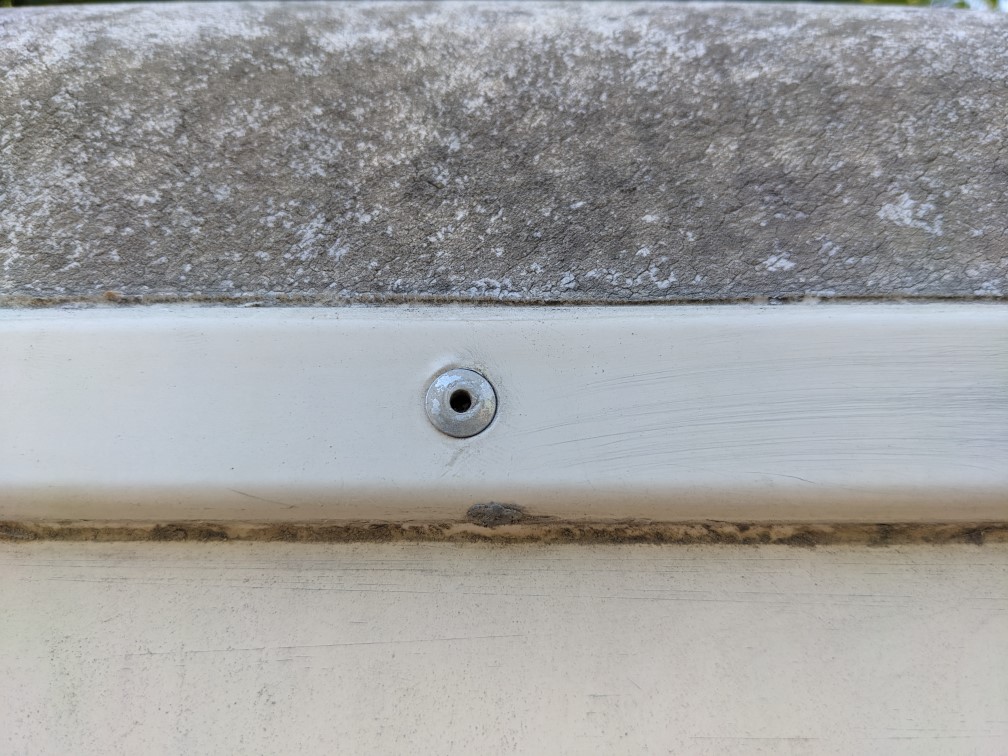thesameguy
Well-known member
- Joined
- Jun 6, 2014
- Posts
- 623
Hi all -
We had some intense weather last winter, the result of which was a tree branch landing on the roof and tearing up the rubber of our '93 Southwind. It was not a big branch, but the wind was intense. If I'm honest, it was no great loss - the roof is obviously quite old, and for the short money we paid for the rig we have gotten exceptional value. If our relationship ended today, we wouldn't be sad. Insurance paid us out, which certainly doesn't hurt the equation.
That said, the Southwind does everything we want it to and does it well. So, before wet weather sets in we are going to attempt to replace the roof. Yes, I realize it's a big task.
I'm fairly certain I'm going to go with the LaSalle XTRM PVC material ... it seems to be a good option overall and the manufacturer has been very responsive to my questions, which I enjoy.
i have three questions I am hoping someone can answer for me:
1. One of the tears is around the AC, and there was some water intrusion. I caught it the next day and tarped the roof, but there is a 6" square soft spot. No damage elsewhere, and we had two more months of very wet weather so it would have shown up by now. I'm sure I will be replacing some outer plywood there... any tips on sectioning and replacing?
2. The edges of the roof are radiused, not square. The roof is retained on the sides with a trim bar, which is riveted on. Any tips for removing it beyond "drill?" How is it replaced? To what do the rivets attach?
3. The branch took out the chimney for fridge and what I believe is the water heater. Any thoughts on what replacing those fixtures entails?
I'm up for this adventure and if it doesn't work out it's no great loss. But I think it'll be a fun experiment, and if we can get a few more trips out of the beast well worth the effort.
We had some intense weather last winter, the result of which was a tree branch landing on the roof and tearing up the rubber of our '93 Southwind. It was not a big branch, but the wind was intense. If I'm honest, it was no great loss - the roof is obviously quite old, and for the short money we paid for the rig we have gotten exceptional value. If our relationship ended today, we wouldn't be sad. Insurance paid us out, which certainly doesn't hurt the equation.
That said, the Southwind does everything we want it to and does it well. So, before wet weather sets in we are going to attempt to replace the roof. Yes, I realize it's a big task.
I'm fairly certain I'm going to go with the LaSalle XTRM PVC material ... it seems to be a good option overall and the manufacturer has been very responsive to my questions, which I enjoy.
i have three questions I am hoping someone can answer for me:
1. One of the tears is around the AC, and there was some water intrusion. I caught it the next day and tarped the roof, but there is a 6" square soft spot. No damage elsewhere, and we had two more months of very wet weather so it would have shown up by now. I'm sure I will be replacing some outer plywood there... any tips on sectioning and replacing?
2. The edges of the roof are radiused, not square. The roof is retained on the sides with a trim bar, which is riveted on. Any tips for removing it beyond "drill?" How is it replaced? To what do the rivets attach?
3. The branch took out the chimney for fridge and what I believe is the water heater. Any thoughts on what replacing those fixtures entails?
I'm up for this adventure and if it doesn't work out it's no great loss. But I think it'll be a fun experiment, and if we can get a few more trips out of the beast well worth the effort.

